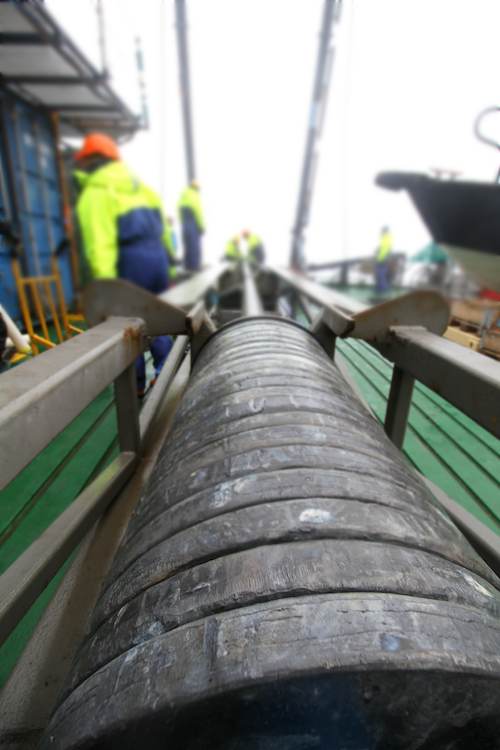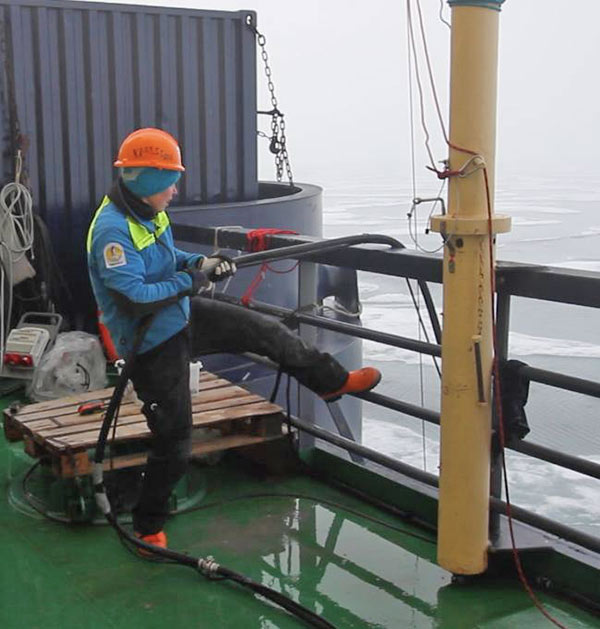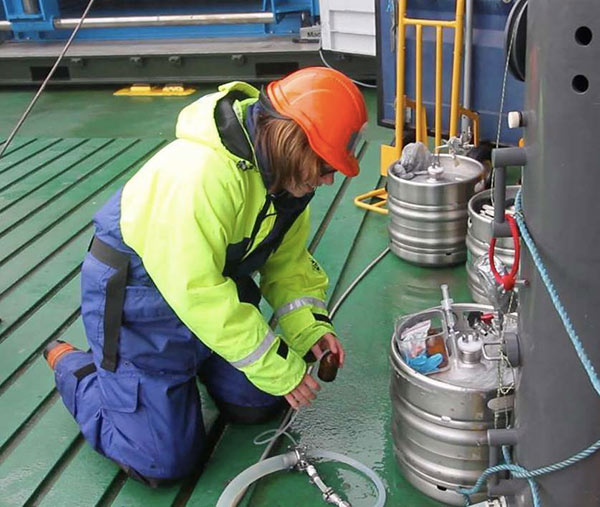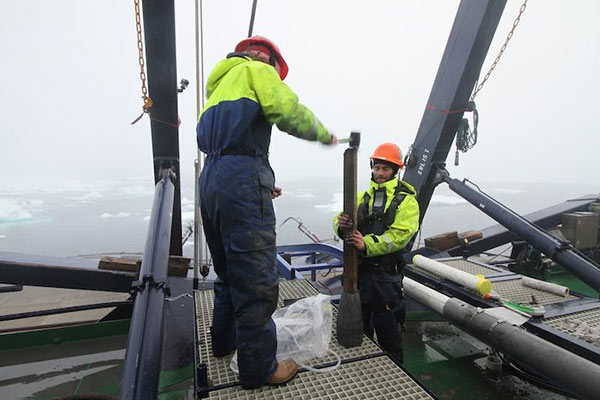|
6 August 2014
As our atmospheric measurement systems are needing slightly less close tending than earlier in the cruise, on these last few stations I’ve had more of a chance to see more of the work going on down on the “lower decks” of Oden. Once they even let me maneuver the thing that assures the cable is wound properly on the small red winch!
One might divide the science work being done on Oden into three classes – atmosphere, water, and sediment. Of course there is some overlap, and each class has an interest in what happen in the others, but the three classes often work separately. Overall, SWERUS-C3 project is interested in tracing the path of carbon – often in the form of methane – in the coastal shelf ecosystems we’re surveying, through all three of these classes – atmosphere, water, and sediment. Our atmospheric measurements are carried out on deck 4 there is meteorological hut on deck 7; most everyone else works on deck 1 or 2 except for the hydroacoustics (& sonar) folks who work on the bridge deck (6).

An impressive part of SWERUS is how physical much of the deck 1&2 sampling is. Though in the end, we are all looking at/analyzing samples on very fine scales, the amount of material we must handle, or the equipment we use, is often massive.
In my atmospheric “class”, much of the (literal) heavy lifting and labor happened at the beginning of the cruise, during mobilization and the first few days. The meteorology team installed rather massive atmospheric radar units and other equipment on Oden. But, the heavy work came at the beginning.
But for those in the water and sediment groups, it’s a bit of a slog for every sample. Whether by maneuvering large and heavy objects into and out of the water for various forms of sediment coring, or just moving around large amounts of retrieved water in containers on the deck (and pumping that water to various locations for analysis). Some days I’m glad to be in the atmospheric group; air is lighter (or at least less dense)!

At stations, Emma and Martin store over a thousand liters of water to filter; others fill kegs with seawater for methane studies. Plus “Go-Flo” water sampling. And water from the CTD... And then there are the sediment cores. Piston coring, multicoring, Rumohr coring... all produce lots of sediment to be sorted, labelled, frozen, analyzed, etc. There are many people running around on deck carrying pipes filled with sediments.

It is something of a dance to carry out all these operations simultaneously at a station. But everyone has gotten the pacing by now, and it all seems to go generally smoothly. Usually. But sometimes you hit a rock.

|